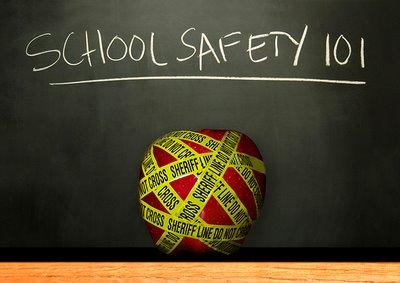School Safety: Avoid Reductionist Thinking

For the next issue of Theory to Practice magazine, the Lehigh University College of Education brought together two experts—alumnus Peter Langman, Ph.D., author of Why Kids Kill: Inside the Minds of School Shooters, and one of his former professors, Arnold Spokane, program director of counseling psychology at Lehigh—to discuss issues surrounding school violence. Their conversation uncovered some fascinating insights on the individuals who conduct school shootings as well as what teachers, administrators, parents, and students can do to help prevent these tragedies.
The following excerpt came from that conversation. A longer version will appear in the 2013 issue of Theory to Practice this fall.
Spokane: Peter, I’ve known you since you were in graduate school. You were a brilliant student, and I taught you in several classes. How did you evolve this interest? Where did this come from? And how is it that this has been your career as a Lehigh graduate?
Langman: I was doing my doctoral internship and I was at KidsPeace Hospital doing psychological assessment of children and adolescents. [The mass shooting at] Columbine [High School] occurred on April 20, 1999. On April 30, 1999, a 16-year-old boy was admitted to KidsPeace because he was a Columbine risk. He had a hit list, he had threatened to kill someone on his website, he had some strange behavior, and I was assigned a case to evaluate him. That’s how I first encountered the topic of school shooters. And after that kid, a week later, there was another one. And then another one and another one. And at that time, there was no literature on school shooters. The FBI had been doing a research project on this even before Columbine because the academic year 1997-98 had more school shootings than any year ever. So they were already looking at this phenomenon, and then Columbine occurred. Then in 2000, the FBI report came out, and shortly after that, there was a report by the Department of Education in combination with the Secret Service. So the government at a high level was looking at these events.
Meanwhile, I was collecting my cases and studying the cases that were occurring nationally and I wasn’t satisfied in what I was seeing in the way of research. Everyone initially was looking for a profile—who are these kids, what do they look like, and how can we recognize them? As if they are more or less the same. And what struck me was how different they were. In fact, that very first 16-year-old-kid who came in, my struggle was trying to figure out, is he schizophrenic, in other words, psychotic? Or is he a psychopathic personality? And this was years before I developed my typology, but that was my primary question in terms of what we call differential diagnosis. Is it this? Is it that? So it was that personal experience sitting with these kids who were planning mass murder, interviewing them, evaluating them, trying to come up with 1) diagnosis and 2) homicide risk assessment—was it just a false alarm, was it just a kid saying I am so mad I could kill somebody? Was there evidence of attack planning?
Spokane: I know you as a very broad thinker. You are also a genealogist, of sorts. You helped me find my roots in the Ukraine. And you are also a playwright. We try to train students broadly as psychologists to help them understand social issues, and to me, you are that ideal. Do you have any advice to students coming into the College of Education on how to conceptualize problems with violence in schools and school safety and education broadly for children?
Langman: A few thoughts come to mind. The first is, avoid reductionist thinking. So much of the material on school shooters points to a single cause or a single explanation. The kid was bullied. Well, millions of kids are bullied in this country and maybe one in ten million becomes a school shooter. He may have been bullied, and he may not have been. In some cases, maybe he was the bully. Or people blame the media. He watched Natural Born Killers. Yes, but so did millions of others. There is a tendency to focus on one cause, but you have to think very broadly. That may have been a factor, maybe he was bullied. Or he was obsessed with the video game Doom. But why was he was obsessed with Doom? What did that do for him as a person, why was he drawn to it? What was the family life like? Was there a lot of rejection? Was he using drugs? What of a dozen or more different factors came together to cause him to do this?
Spokane: In other words, look at a child’s context deeply and broadly and not superficially. Know these kids.
Langman: Yes.
Peter Langman, Ph.D., has worked with children and adolescents for more than two decades. He is author of Why Kids Kill: Inside the Minds of School Shooters and has a private practice in Allentown with his wife, Madeleine Langman, Ph.D., another graduate of Lehigh’s Counseling Psychology program. For more information on the subject of school violence, please visit his website: www.schoolshooters.info. Langman received his B.A. in psychology from Clark University, his M.A. in counseling psychology from Lesley University, and his Ph.D. in counseling psychology from Lehigh University. He is also a poet and a playwright.
Arnold Spokane, Ph.D., is professor and program director of counseling psychology at Lehigh. His most recent research focuses on the relationship of architectural features of the built environment to the social interaction, health, and to recovery from disaster in underserved communities. Spokane received his B.A. in psychology from Ohio University, his M.S.Ed. in higher and adult education from the University of Kentucky, and his Ph.D. in counseling psychology from The Ohio State University.